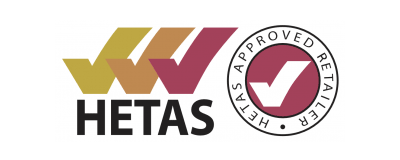Info & Guides
RHI Overview
Here is a brief overview of the Government's domestic Renewable Heat Incentive for Biomass Pellet Stoves with Integrated Boilers. For a more comprehensive overview please scroll down for full details:
- What Is The Domestic RHI? A Government grant to encourage off gas-grid customers to switch from heating their homes with oil or LPG to renewable and sustainable fuels instead such as pellets. More...
- What Is A Pellet Stove? Biomass Pellet Stoves With Integrated Boilers are technologically advanced stoves which burn wood pellets at high efficiency levels to heat your home and water. More...
- Who Can Apply? The domestic RHI is open to home owners, third party owners of the renewable heating system, private landlords, registered social housing landlords and self-builders. More...
- How Much Will I Receive? You will receive 12.2p p/kW of estimated output you will use over the course of a year. This will be paid in arrears every quarter for seven years. More...
- What Are The Upfront Costs? The customer is responsible for purchasing the Pellet boiler and its installation but there is financial aid available. More...
- How Do I Apply? Register at ofgem.com to begin the application process online. If successful, your Pellet Boiler and installer must be MCS certified. More...
- Where Can I Purchase The Stove And Fuel? At Glowing Embers we supply a full range of RHI compliant Pellet Boilers and fuel.
RENEWABLE HEAT INCENTIVE
Domestic RHI full overview:
Long awaited and some would say long over-due, the Renewable Heat Incentive is just around the corner! The exact date was due to be unveiled at this year’s Ecobuild Expo but mysteriously vanished from the itinerary, however latest DECC (Dept. of Energy & Climate Change) estimates suggest a spring 2014 roll out.
Following in the wake of previous Government initiatives, namely the Feed-In Tariffs Scheme and the Renewable Heat Premium Payment Scheme, which industry folk argue didn’t go far enough, the domestic RHI boils down to money back in your pocket every quarter for seven years to encourage you to stop burning fossil fuels to heat your home but instead look towards renewable heating systems. Of course there are criteria that must be met before joining this scheme and we shall go into further detail on these later…
- Why Renewable Heat?
The question should really be “why are we only now converting to renewable heat?” In the UK we almost exclusively burn fossil fuels to heat our homes which accounts for 28% of the entire energy demand for the UK and this simply isn’t sustainable. The non-domestic RHI (2011) and the domestic RHI are the first steps towards a mass rollout of low-carbon heating systems in the not too distant future all in the aim of hitting various low emission targets set out by the DECC.
- What Is Pellet Fuel?
To manufacture a wood pellet you basically take the by product of wood industries such as saw-milling and compress it right down to a compact cylindrical shape. The density of this little pellet and the lack of moisture within it provides a fuel source with incredibly high combustion efficiencies. The DECC's long term aim is to have a completely carbon neutral system in place from the sourcing and manufacturing to the transporting and finally the burning of pellet fuel. The largest exporters out there are the Canadians and Russians who currently ship millions of tonnes of wood pellets to over a million installations around Europe namely Scandanavia, Italy, Holland, Germany and Austria and it is these countries that our Government are using as a template for the potential success of a scheme like the RHI. The correct storage of this fuel is incredibly important; get it wet and it resorts to its natural form... sawdust! Pellet Stoves with Integrated Boilers actually come with an internal feed box (or storage box) which ranges from model to model. There may be room inside to store 10kg of pellets, there may be room to store 110kg of pellets. This cuts down the need to constantly refill the fuel but where space allows, it is worth buying your pellets in bulk to cut the costs down even further and store them in an external tank, silo or even a bunker. The storage tank and the Pellet Stove can potentially then be connected via a vacuum pipe to draw pellets into the feed box. It is essential that your pellets are purchased only from an approved seller, lists of which can be readily found online.

Some will tell you that this initiative is targeted at off gas-grid customers but this is not strictly the case, they simply have the most to gain from a scheme like this. The four million homes currently off the gas-grid and using oils or LPG heating fuel are being targeted for two reasons; a) Their outlay for heating fuel is greater (50% higher for oil and 100% higher for LPG compared to a gas-grid home in 2011) and so a financial incentive to switch to renewables will appeal more and b) These homes emit more carbon and so the sooner they are switched, the better! Regardless, anyone can apply but you must be the owner-occupier, a private landlord, a registered provider of social housing, third party owner of the heating system or self-builder. Forget about applying if you are a new build as you should already be compliant with the building regulations concerning emissions and multiple dwellings may fall under the non-domestic RHI; this is single dwellings only.
- Who Is Responsible for The Domestic RHI?
As you may come to expect with any Government led initiative, there are many departments coming together to administer, monitor and regulate the domestic RHI. The main players are the DECC, Green Deal, the Microgeneration Certification Scheme (MCS), Ofgem and The Energy Saving Trust and if that isn’t enough for you then throw in The Energy Saving Advice Service for good measure. Loosely speaking, their individual responsibilities break down as follows:
 |
DECC – Original concept based on their collated data | |
 |
ENERGY SAVING TRUST – Implementation of Green Deal assessments | |
 |
MCS – Certification body for all RHI eligible products and installers | |
| OFGEM – Administration including handling applications | ||
 |
ENERGY SAVING ADVICE SERVICE – Advice on energy saving..? |
Quick answer is probably not but there are staggered dates for legacy applications which I shall explain later. For now though there are five specific types of renewable heating systems eligible for the domestic RHI but at Glowing Embers we are only really concerned with Biomass Pellet Stoves With Integrated Boilers. Don’t be put off by terms like ‘biomass’ and ‘pellets’. These are simply advanced versions of a regular boiler stove and instead of good old logs or coal; they are fuelled by sustainable wood with very low moisture content which is compressed into pellet form.
But before you run out to buy any old pellet stove and back boiler, it must be MCS certified and listed on www.microgenerationcertification.org. This list will be updated as new models meet the emission levels required to join the scheme. And this is no job you can undertake yourself at the weekend as the installer has to be MCS registered as well and the pellets can only be purchased from an approved supplier (lists of which are available online). All this certification ensures “technologies have been installed and commissioned to the highest standard for the consumer”…

Think of these as the next generation of stoves. Controlled by a computer, they emit less Co2 emissions and burn at efficiency rates up to 90% which no doubt will be improved even further in the future. The pellets can be automatically fed into the insulated combustion chamber thanks to the sensors and technical wizardry within these stoves to ensure an accurate level of pellets are delivered. This removes the human element of over filling your burner and killing the efficiency of it. The larger systems also feature automatic cleaning settings to keep on top of the ash accumulating in the tubes and on the grates. Basically, the more you spend on your Pellet Stove, the less manual maintainance is required...

At Glowing Embers we have had a sneak preview of the Ofgem application website and they have strived to cut the time it takes to fill in their online forms down to fifteen minutes (for those acquainted with online form filling). Once you have registered at Ofgem.gov.uk and their online forms are completed, the process is as follows:
Step 1 - You will be required to submit your Energy Performance Certificate (EPC) which will lead to you having to arrange a Green Deal Assessment (GDA) for your home. You need to have a GDA to apply for the domestic RHI as proof your property meets the minimum energy efficiency requirements for loft insulation, cavity insulation thickness, draught proofing etc., for a Biomass Pellet Boiler to work efficiently. There are finance plans to help with the cost of carrying out the work recommended in your Green Deal Advice Report which is definitely worth looking into as Green Deal Cashback is , I believe, the only financial aid which the Government won’t claim back from you via deductions to your RHI payments. Visit gdorb.decc.gov.uk/consumersearch for providers registered to offer Green Deal Cashback or contact the Energy Saving Trust to book your Assessment.
Step 2 - You want to start looking into the Biomass boiler itself and the installer. Both of these must be MCS certified and can be found on the lists published through their website (www.microgenerationcertification.org). You can contact as many installers as you wish to compare quotes and if at this point you have not yet applied for the RHI (i.e. you have ignored Step 1), you have twelve months from the date your MCS installer commissions your installation to apply.
Step 3 - Just as your Biomass Pellet Boiler and installer must be certified, so to do the pellets being used as fuel. Various sustainably sourced wood merchants promote their pellets as being RHI-compliant such as all Woodsure certified suppliers but again, you can search online for approved supplier lists. If you have ready access to a fuel source, you must apply to effectively become an approved supplier to prove the eligibility of your wood source.
Step 4 - Maintain your Biomass Pellet Boiler and bask in the renewable heat warming your home and of course, receive quarterly payments based on an estimation of your heat usage…
It is worth noting that your RHI payments are based on the ‘deemed’ (estimated) renewable heat generated from your Biomass Pellet Boiler. Your Energy Performance Certificate will be used for this purpose and for a Biomass installation, the tariff is set at… 12.2p per kW. So, for every kilowatt of renewable heat the Government estimate you will use, you will receive 12.2p back in your pocket. Therefore an estimated usage of 15000kW p/a equates to twenty eight payments of £457.50 over the seven year period of the scheme. That’s not bad at all but why 12.2p per kW? The DECC have deemed this to be the difference it will cost you to switch from your fossil to renewable fuel and will pay you every four months in arrears. Please note, I am only addressing Biomass Pellet Boilers here and this tariff differs per kW for the other eligible renewable heat sources; Air Source Heat Pumps 7.3p, Ground Source Heat Pumps 18.8p and Solar Thermal 19.2p.
- On-Going Maintenance & Monitoring
Once you are up and running on the domestic RHI, the Government have put a couple of measures in place to ensure your on-going compliance with the rules of the scheme. To receive your payments you have to complete an annual declaration that you are indeed sticking to the rules. This may seem a bit daft but in reality they are referring to maintenance of the equipment. It is your responsibility to maintain your Biomass Pellet Boiler and to inform them immediately if there are any changes to the system or if it breaks down for a period of time. The DECC are offering a £200 p/a payment to customers purchasing one of their Metering And Monitoring Service Packages but for some reason Biomass Pellet Boilers are exempt from this offer. These may be included into the offer in the future so worth keeping an eye on.
You may also be subject to a random audit on your system or required to install metering equipment. It is the intention of the MCS that all certified installations (i.e. all of them!) are ‘meter-ready’ to reduce the impact on you in the future if you are required to retro fit such a device.
- What If I Already Have A MCS Approved Device Installed?
These are referred to as ‘legacy applications’ and apply to you if your system was installed after 15th July 2009. The dates when legacy customers can apply to Ofgem for the domestic RHI will be staggered to avoid mass applications bringing the whole system down to its knees in the first week. These dates will be confirmed shortly and will probably favour those who have not received Government funding from previous schemes. In terms of eligibility criteria, it is the same as for new applicants with the exception being standards at the time of installation must be met, not the current standards (air quality, emissions etc.).
- What Are The Downsides?
To be honest, if you are the type of household at whom the scheme is aimed, there are little to no downsides. As I have said at the start, the domestic RHI is targeting off-gas grid consumers and so the quarterly payments may not be substantial if you are on the gas grid. The cost of installation and the boiler itself is an upfront cost bared by the consumer. Then there are the degression triggers. These may sound ominous and somewhat made up (‘degression’?) but basically the DECC do not know what volume of interest there shall be for the domestic RHI and at the end of the day this is a Government scheme with a budget funded by the taxpayer. If the demand is huge and budgets are going to be exceeded, this will trigger a reduction in the tariff of 12.2p p/kW by 10% every quarter. At Glowing Embers our advice is get on the Renewable Heat Incentive as early as you can and lock in the 12.2p p/kW rate or potentially lose out…
PLEASE NOTE: The information given in this section was correct at the time of writing. Some figures may have changed since.














